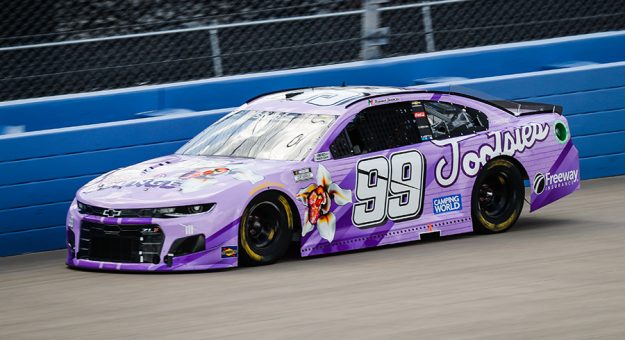On June 30, Trackhouse Racing threw the NASCAR world a 180-mph curveball.
Roughly five months after starting its first season in the NASCAR Cup Series, the team co-owned by Justin Marks and international pop star Pit Bull announced an aggressive expansion.
It was purchasing all of Chip Ganassi Racing’s NASCAR assets, including the two charters it uses to field cars driven by Kurt Busch and Ross Chastain.
This news came a month after Trackhouse had been blindsided when Spire Motorsports sold two of its three charters to Kaulig Racing ahead of that team’s jump to full-time Cup Series competition next season.
Trackhouse had been leasing one of those charters to field Daniel Suarez in the No. 99 car.
At the time, Marks said Trackhouse would race “no matter what” happened in relation to obtaining a charter.
“I’ve probably been a little too vocal maybe on that,” Marks said after his purchase of CGR was announced. “I think the only reason why I had some of those comments was because of some frustration, because I was a bidder on no less than four charters before this point, and I know what those charters traded at. But things are changing quickly in the economy of this sport.”
Charter Game
How much does it take to break into NASCAR’s top series?
The answer to that question changed prior to the 2016 season, when NASCAR, along with the Race Team Alliance, announced a grand experiment called “The Charter System.”
It was billed as the equivalent of a franchise system for Cup Series teams, aimed at increasing the value of organizations that consistently competed on stock car racing’s top circuit.
At its base level, a charter guarantees teams a starting spot in every Cup Series points race. Beyond that, the agreements, which were renewed in 2020 and expire at the end of 2024, dictate how revenue (TV and race purse) is distributed among teams, tracks and the sanctioning body.
• There are 36 charters for a field capped at 40 entries. Non-chartered teams are “open.”
• Teams may sell their charters on the open market while also leasing a charter to another team for one full season over the course of the agreement.
• Teams with charters are held to a minimum performance standard. If a charter team finishes in the bottom three of the owners’ standings among all charter teams for three straight seasons, NASCAR can revoke that charter.
“I thought it was something and something was better than nothing,” Brad Keselowski, future minority owner of Roush Fenway Racing, told SPEED SPORT in August of the charter system. “I was not thoroughly convinced that it would be successful. I think it has proven to be more successful than most people thought it would be with respect to generating value for the teams, which is ultimately important for the health of the sport, short term and long term.
“I by no means think it’s been a perfect success. I don’t think most people would say it’s a perfect success. But I think it’s been a solid step in the right direction for making this the sport we wanted it to be.”
What convinced Keselowski the charter system may have merit?
“Over the last 18 to 24 months you’re seeing the team values go up,” Keselowski said. “That’s been impressive.”
The public won’t officially know the going rate of a charter unless a team decides to share that (unlikely) or it comes up in a court case. However, the Associated Press reported in the wake of Kaulig Racing’s announcement that it paid around $10 million per charter.
Team owner Matt Kaulig didn’t confirm the number but said at the announcement “we’re very comfortable” with the cost.
“It’s the price to play,” Kaulig said. “That’s just the way the system works. In the NFL, you have to buy a franchise. If you want a team, you have to pay. … We worked very well with Spire to make that happen. And so we’re very pleased with the outcome.”
Click below to continue reading.
